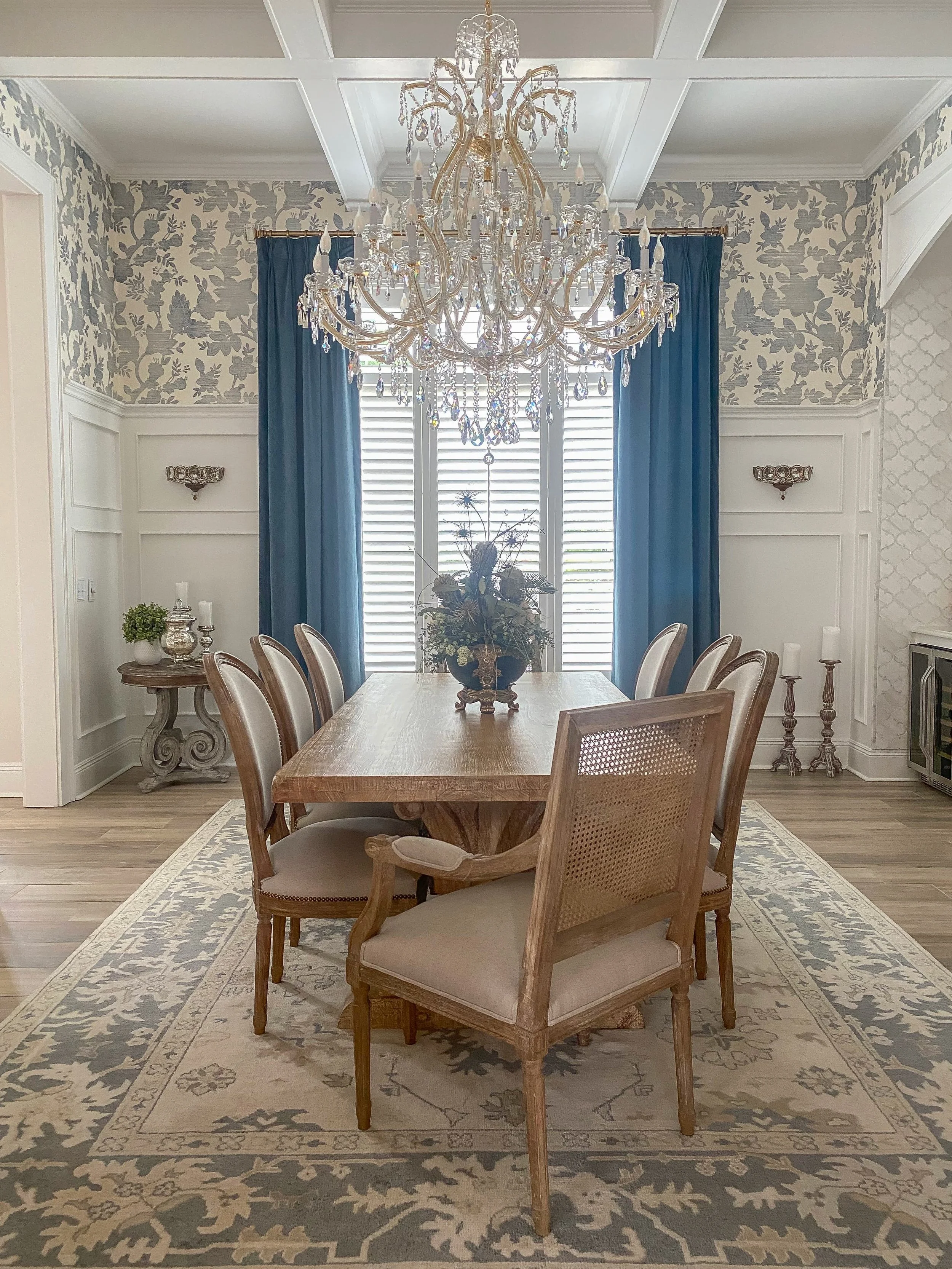Rule of Thumb | Dining Room Edition
As self-ascribed dinner party enthusiasts, we at RBID love designing the spaces where friends and family gather for a meal. Our dining spaces are often hard working flex spaces that go beyond the occasional formal dinner - serving up homework, arts and crafts, reading, work, coffee or a cocktail. And while you may think it's simple to furnish your dining space, there are some rules of thumb that we don't want you to miss.
WHAT SIZE DINING TABLE DO I NEED?
Determining the best size table for you space is simple! You will need 42-48" of space between the edge of your dining table and any adjacent furniture (like a sideboard) or walls. This allows for traffic flow around the dining table, as well as negative space for your eye to rest.
WHAT SIZE AREA RUG DO I USE?
If space allows an area rug can ground the dining space and pull the room together. The rug should be at least 30" bigger than the dining table on all four sides. This allows chairs to slide out entirely while still resting fully on the rug.
HOW MANY DINING CHAIRS CAN I FIT AT MY TABLE?
When choosing seating for your dining table, you should account for a minimum of 24" per person at the table, leaving at least 12" at either end for the head chairs to tuck in. For example, if your table is 8' long, then you can fit 3 chairs on each side comfortably, with a head chair at each end.
Pro Tip! Does your table have an apron? This is the portion of the table that is vertically positioned underneath the table top. Check the dimensions of your table apron to ensure at least 7" of clearance between your chair seat and the apron. If your chair has arms, make sure those will slide under too!
HOW HIGH DO I HANG MY LIGHT FIXTURE?
The pièce de résistance - your beautiful dining room chandelier! Don't fall prey to hanging it too close to the ceiling so that it misses its moment entirely. A good Rule of Thumb is to hang your fixtures 30-34" from the top of your dining table to the bottom of the fixture. This gives you clear visibility beyond the fixture (while standing and seated), while still allowing it to properly light your table. A great example of when form and function unite!
We hope these tid bits were helpful for getting your dining space just right. If you need an expert’s eye, we’re always here to help with our Furnishings & Decor services. Give us a shout!



